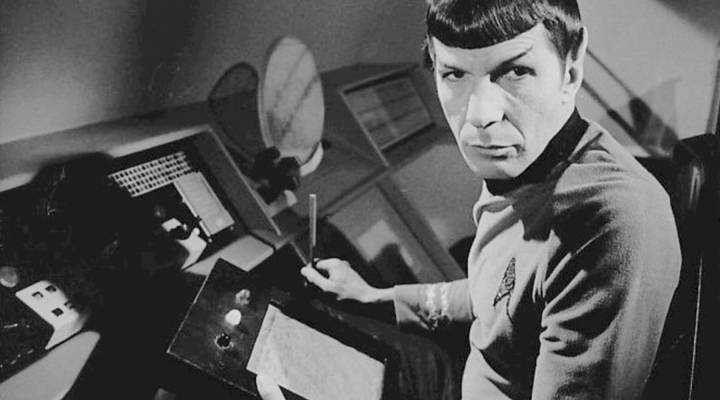
How scientifically plausible is ‘Star Trek’?

“Star Trek” turns 50 on Sept. 8, and instead of buying it a fancy sports car, our mission is to boldly go down the “Star Trek” rabbit hole, or rather, wormhole, and nerd out about the show to mark this milestone. We spoke to fellow Trekkies, including a writer, a showrunner and a scientist, about why the series matters to them. Check out the rest of our 50th anniversary coverage here.
David Batchelor comes from a place where a lot of big “Star Trek” fans end up: NASA. Batchelor — an aerospace technologist at the Goddard Space Flight Center — wrote an extensive piece on the science of “Star Trek,” chronicling what’s realistic and what’s not.
His article, titled “The Science of Star Trek,” lists 18 different technologies from most scientifically plausible to least.

Click the above image to see the full infographic. (Credit: Best Computer Science Degrees, based on Batchelor’s “The Science of Star Trek”)
Batchelor said that the scientific accuracy on “Star Trek” could vary depending on the series.
“The different shows treated science to greater and lesser degrees of carefulness,” he noted. “‘The Next Generation’ show tried to be even more careful than the original ‘Star Trek’ was. And the ‘Voyager’ spent a lot of time on science details.”
There are examples in “Star Trek” that illustrate how prescient the show could be, like the concept of communicators. But the show couldn’t anticipate everything.
“They didn’t predict that there would be networks of computers like the internet,” Batchelor said, “and they didn’t realize that there would be this social media, you know, uniting us all. But also enabling dangerous things like recruitment of terrorists and stuff.”
Batchelor said that what he does in real life reflects the spirit of the show.

The ”Star Trek” cast visits NASA Dryden (now Armstrong) circa 1976.
“I and a lot of the acquaintances I have at NASA are definitely ‘Star Trek’ fans and inspired by what we saw in ‘Star Trek.’ The missions that I get to work on all are very ‘Star Trek-y,'” he said. “We’re about to launch something called OSIRIS-REx to visit an asteroid and get a sample and bring it back. I got to work a little bit on the radiation forecasting for that.”
In other words: He’s helping protect our electronic devices.
“The sun has a strong solar flare. A lot of high-energy particles come into the area of the earth, and they can strike our electronic devices and make them malfunction,” Batchelor said. “So we have to prepare by shielding the parts with metal, and so I sort of give a forecast: What kind of shielding do you need?”
As for the one technological item Batchelor would really like for himself?
“I’d like to have an android that would do what needs to be done,” he said. “I just went through a lot of yard work.”
There’s a lot happening in the world. Through it all, Marketplace is here for you.
You rely on Marketplace to break down the world’s events and tell you how it affects you in a fact-based, approachable way. We rely on your financial support to keep making that possible.
Your donation today powers the independent journalism that you rely on. For just $5/month, you can help sustain Marketplace so we can keep reporting on the things that matter to you.


















